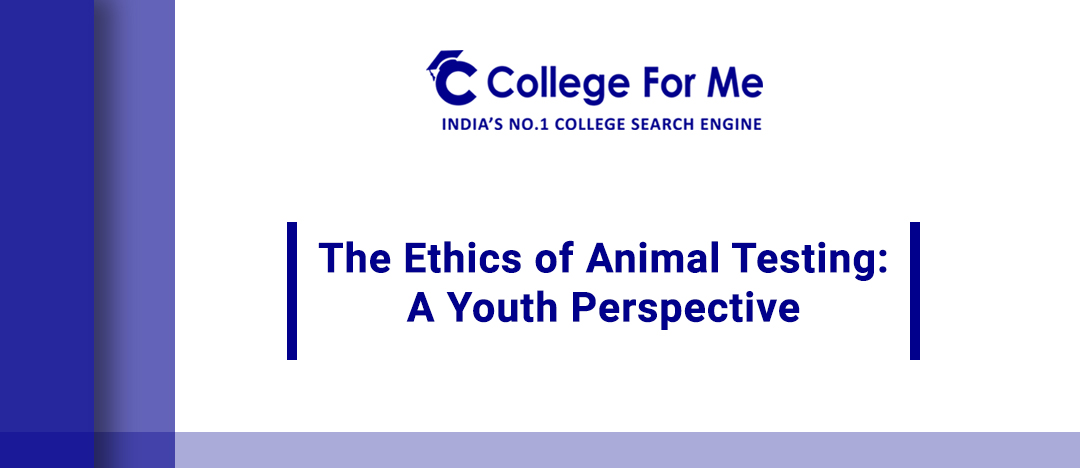Career Scopes Of A B.Tech. Student
There is a high demand for B.Tech. degree holders in the private sector, yet, there is also the opti...

The ethical debate surrounding animal testing has been a contentious issue for decades. It's a subject that has ignited impassioned discussions among scientists, policymakers, activists, and students alike.
In this blog, we'll delve into the ethics of animal testing from a youth perspective, exploring the key arguments on both sides of the debate and shedding light on the important role young people play in shaping the future of scientific research.
Understanding Animal Testing:
Animal testing, also known as vivisection, involves using animals in experiments to gather information about biological systems, develop new treatments, or test the safety of products and drugs. These experiments can range from simple observations to invasive procedures.
The Proponents' Perspective:
-Advancing Medical Science: Proponents argue that animal testing has been crucial in the development of medical breakthroughs, including vaccines, surgical techniques, and life-saving drugs.
-Safety Assurance: They claim that testing on animals helps ensure the safety of products before they are introduced to humans, preventing potential harm.
-Legal Framework: Animal testing is often conducted under strict regulations and ethical guidelines, ensuring that the animals' welfare is protected to the extent possible.
The Critics' Perspective:
-Animal Welfare: Critics argue that subjecting animals to experimentation is ethically wrong because it causes suffering and harm to sentient beings incapable of providing consent.
-Scientific Validity: They question the reliability of using animal models to predict human responses, pointing out that species differences can render results irrelevant or misleading.
-Alternatives: Critics advocate for the use of alternative methods, such as in vitro testing and computer simulations, which are seen as more humane and scientifically advanced.
The Youth Perspective:
As the generation that will inherit the consequences of current decisions, young people have a unique perspective on the ethics of animal testing:
-Empathy for Animals: Many young individuals are passionate about animal welfare and feel strongly about the moral duty to protect animals from harm.
-Scientific Innovation: Youth also appreciate the importance of scientific advancements, but they are increasingly aware of emerging alternatives that could replace animal testing.
-Advocacy and Innovation: Youth-led organizations and initiatives are actively promoting alternative testing methods and advocating for stricter regulations on animal testing.
The Way Forward:
-Advocate for Ethical Practices: Young people can use their voices and platforms to advocate for more humane and ethical practices within the scientific community.
-Support Alternatives: Encourage the development and adoption of alternative testing methods that are more accurate, reliable, and humane.
-Educate and Engage: Youth can engage in informed discussions, attend workshops, and participate in activism to raise awareness about animal testing and its alternatives.
-Participate in Decision-Making: Seek opportunities to engage with policymakers and organizations to influence regulations surrounding animal testing.
-Promote Transparency: Advocate for greater transparency in animal testing, including public disclosure of procedures and results.
The ethics of animal testing is a complex issue, but the youth perspective brings fresh insights and energy to the debate. Young people have the potential to drive change by advocating for ethical practices, supporting alternatives, and participating in discussions that challenge the status quo. By harnessing their passion and innovative thinking, the youth can play a pivotal role in shaping a more ethical and humane future for scientific research.

There is a high demand for B.Tech. degree holders in the private sector, yet, there is also the opti...

If you are looking for a bright and prospective career, then getting a B.Tech. in CSE must be under ...
Comments (0)